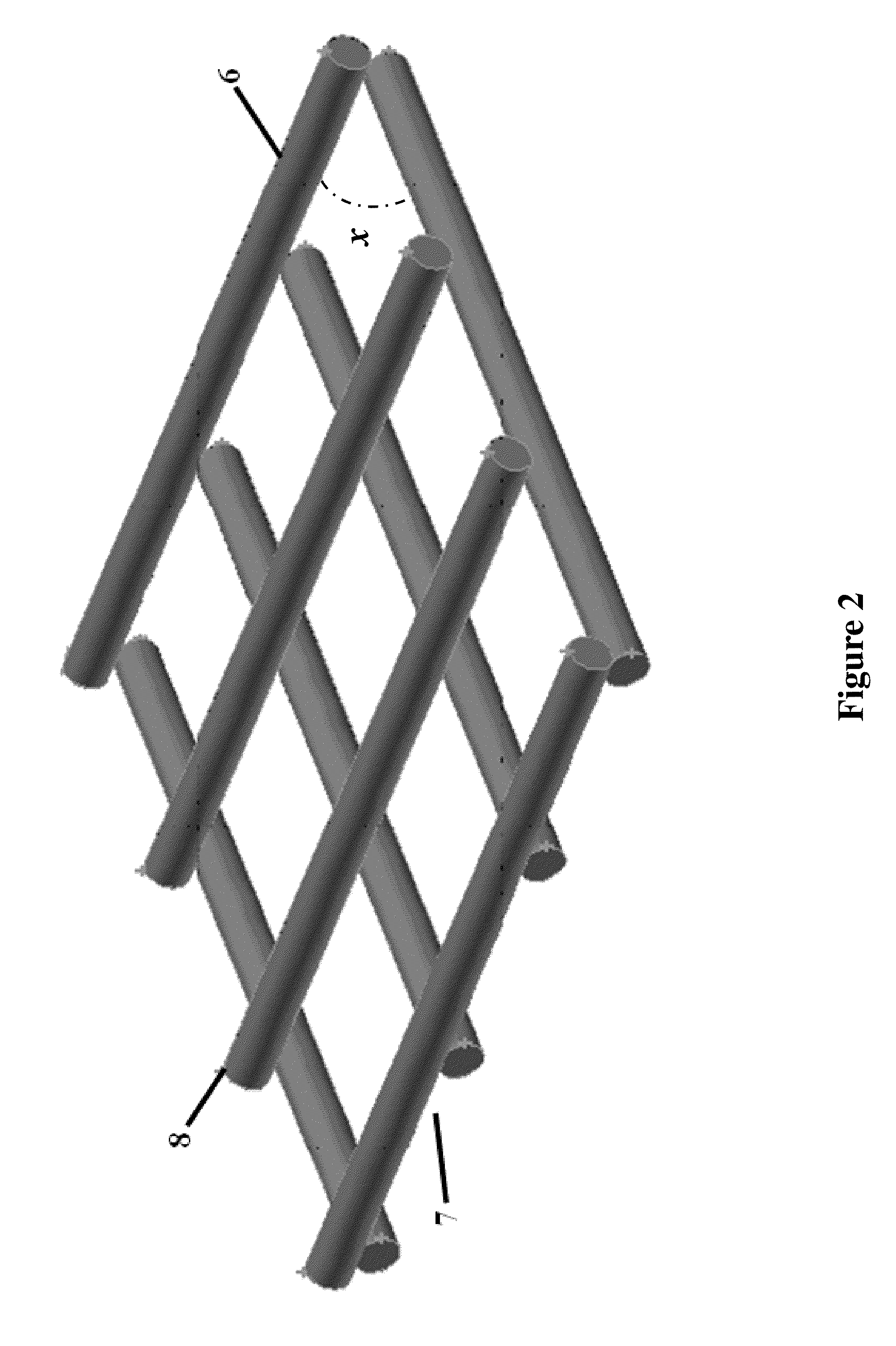Membrane modules utilizing innovative geometries of net-type feed spacers for improved performance in separations and spacer-fabrication methods therein
a technology of membrane modules and spacers, applied in the direction of membranes, filtration separation, separation processes, etc., can solve the problems of negative impact of separation performance, concentration polarization (cp) and membrane fouling (mf), effective trans-membrane pressure, etc., and achieve the effect of improving separation performan
- Summary
- Abstract
- Description
- Claims
- Application Information
AI Technical Summary
Benefits of technology
Problems solved by technology
Method used
Image
Examples
examples
[0072]The following examples show that the novel spacer geometric configuration depicted in FIGS. 3-5 leads to improved SWM-module performance in comparison to that of conventional spacers. In these examples, basic geometrical parameter values are used which are defined with regard to FIGS. 3-5. For the purpose of comparison, the distribution of the flow shear-stresses on the membranes is presented, which is an important feature of membrane operation. In general, increased values of shear stresses are associated with improved performance of SWM modules (see Koutsou et al. cited above).
[0073]FIG. 10 is a graph depicting the computed flow shear-stresses on membrane surfaces employing the net spacer of FIG. 3 with a β-value of 105°, according to embodiments of the present invention. FIG. 11 is a graph depicting the computed flow shear-stresses on membrane surfaces employing the net spacer of FIG. 3 with a β-value of 120°, according to embodiments of the present invention. The computed ...
PUM
| Property | Measurement | Unit |
|---|---|---|
| angle | aaaaa | aaaaa |
| angle | aaaaa | aaaaa |
| thickness | aaaaa | aaaaa |
Abstract
Description
Claims
Application Information
 Login to View More
Login to View More - R&D
- Intellectual Property
- Life Sciences
- Materials
- Tech Scout
- Unparalleled Data Quality
- Higher Quality Content
- 60% Fewer Hallucinations
Browse by: Latest US Patents, China's latest patents, Technical Efficacy Thesaurus, Application Domain, Technology Topic, Popular Technical Reports.
© 2025 PatSnap. All rights reserved.Legal|Privacy policy|Modern Slavery Act Transparency Statement|Sitemap|About US| Contact US: help@patsnap.com



